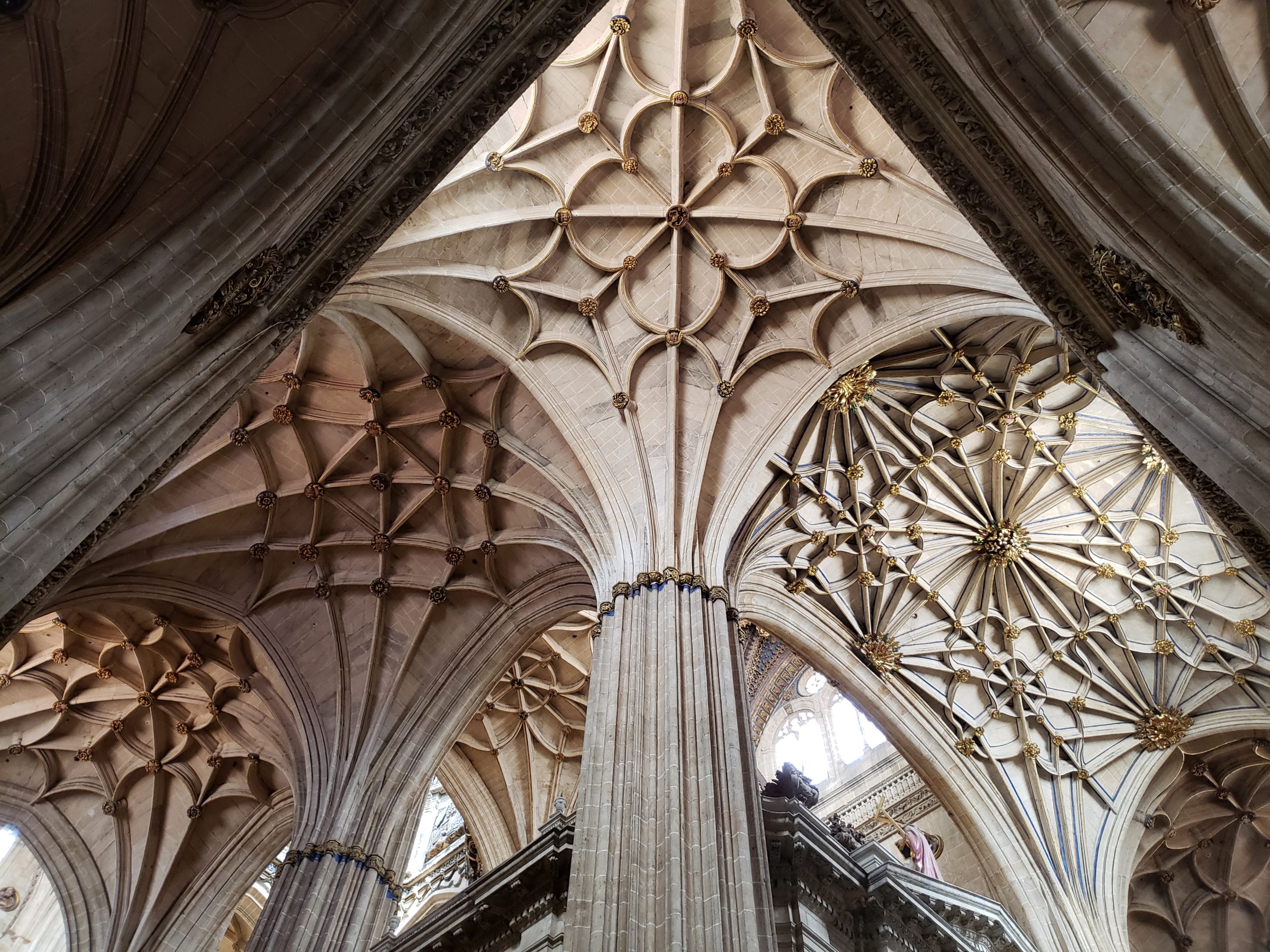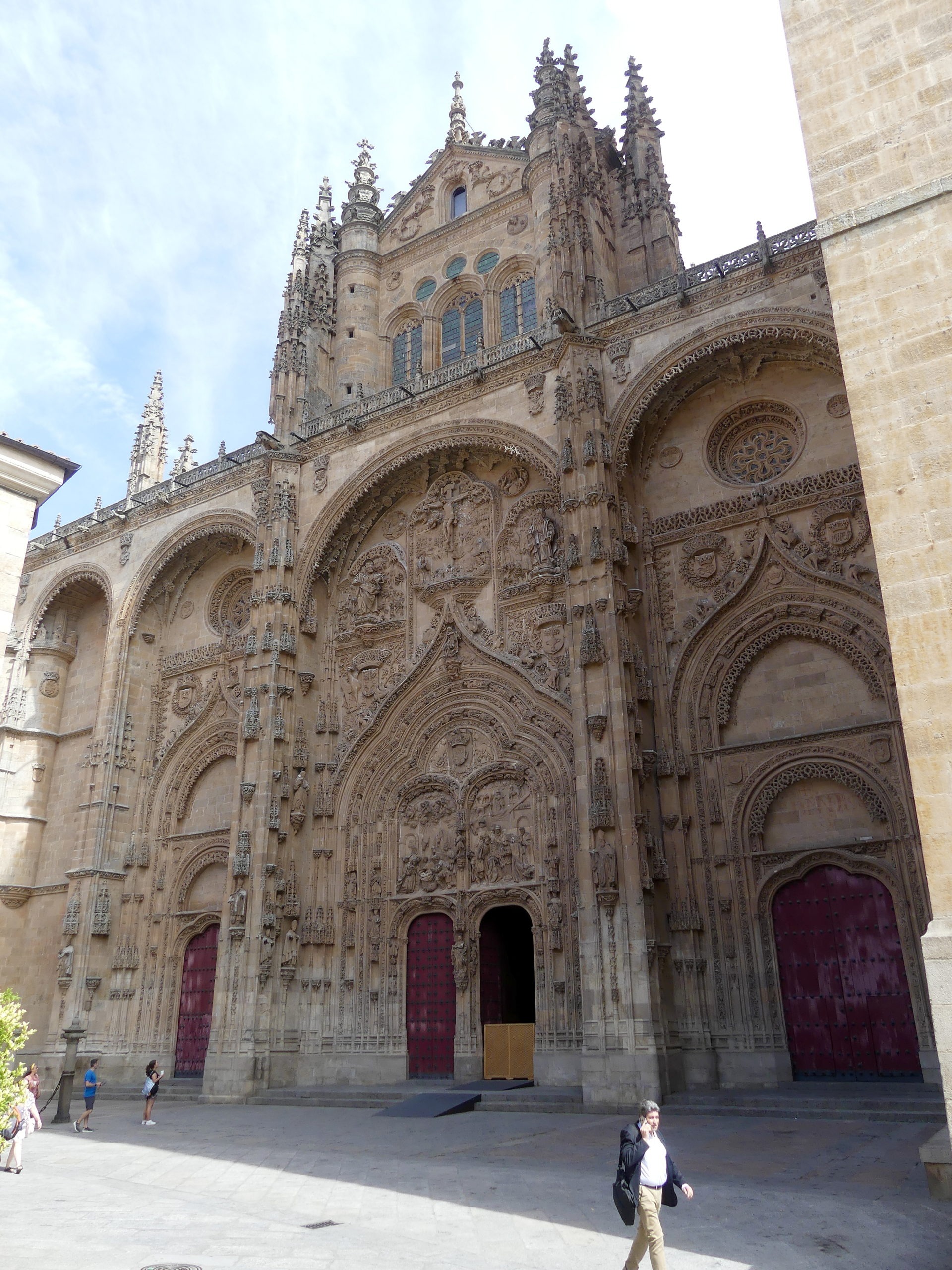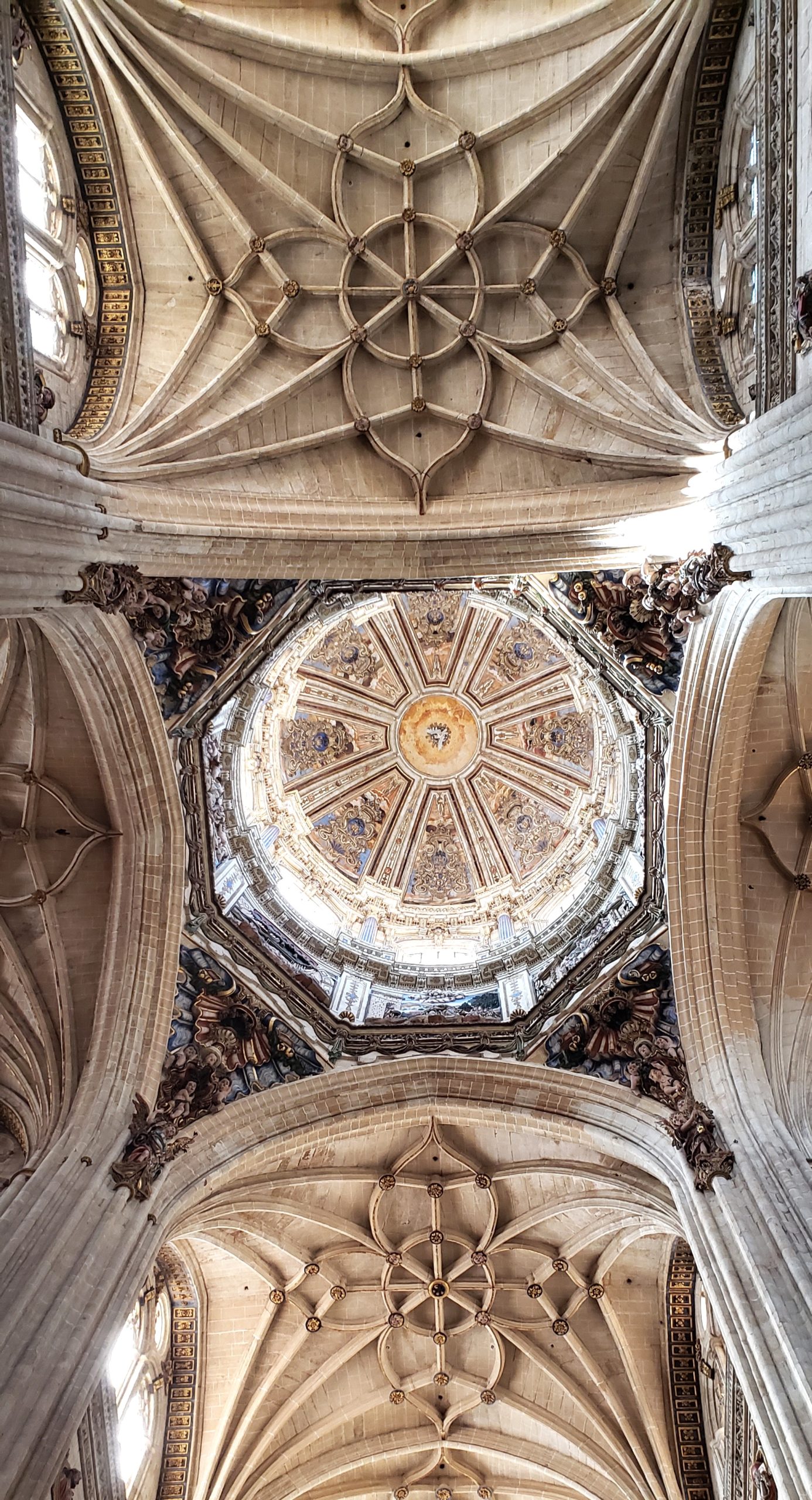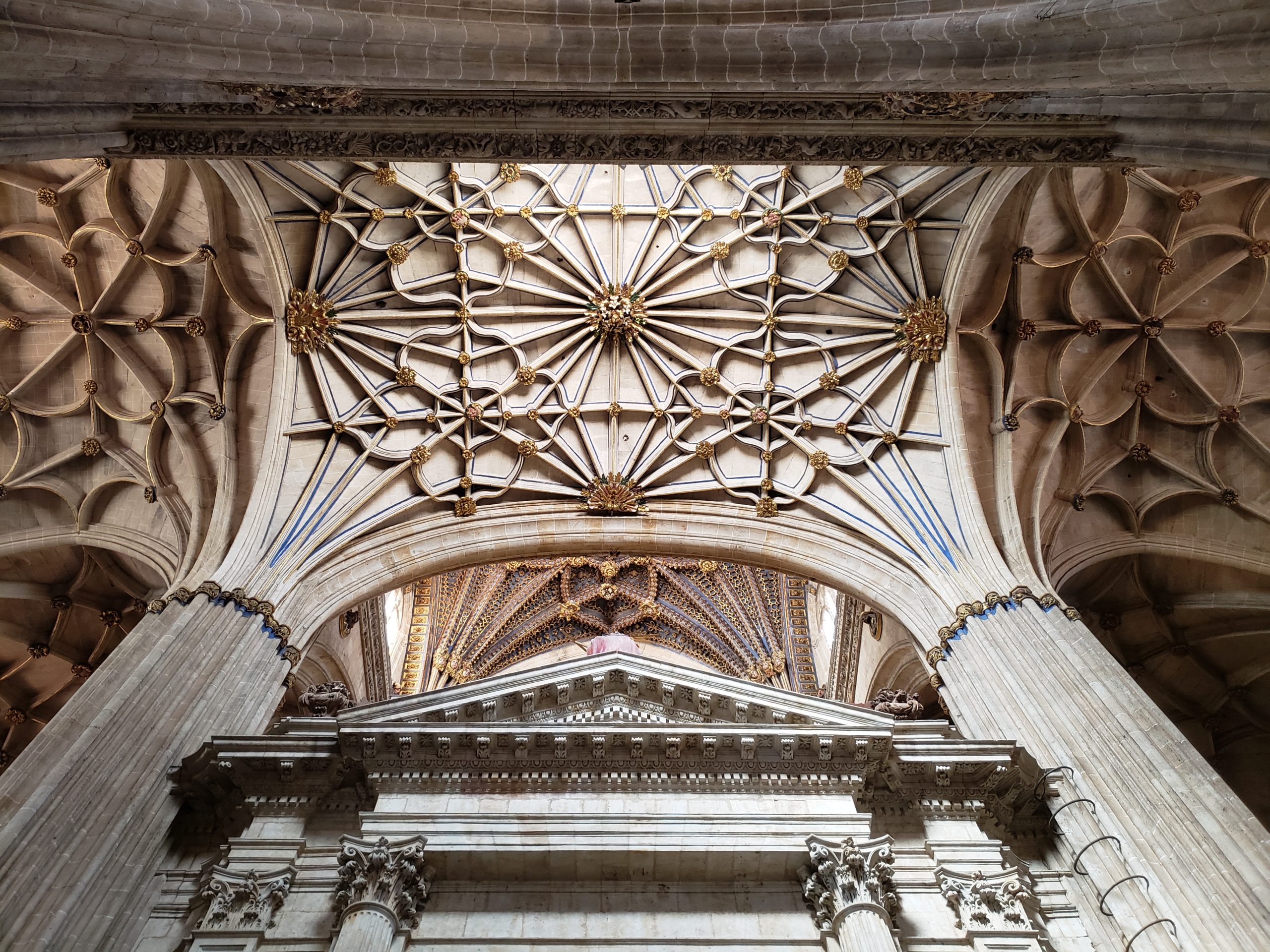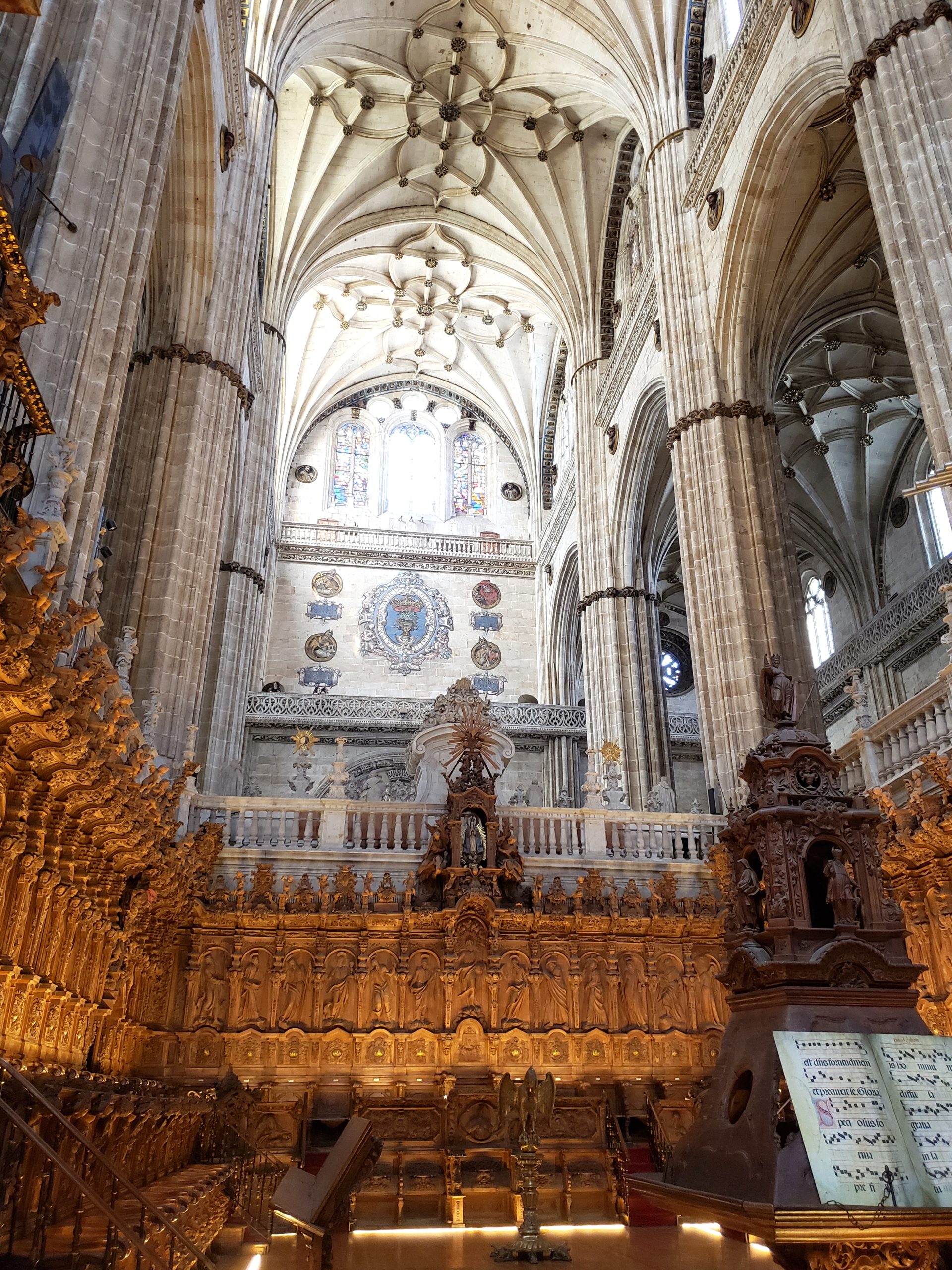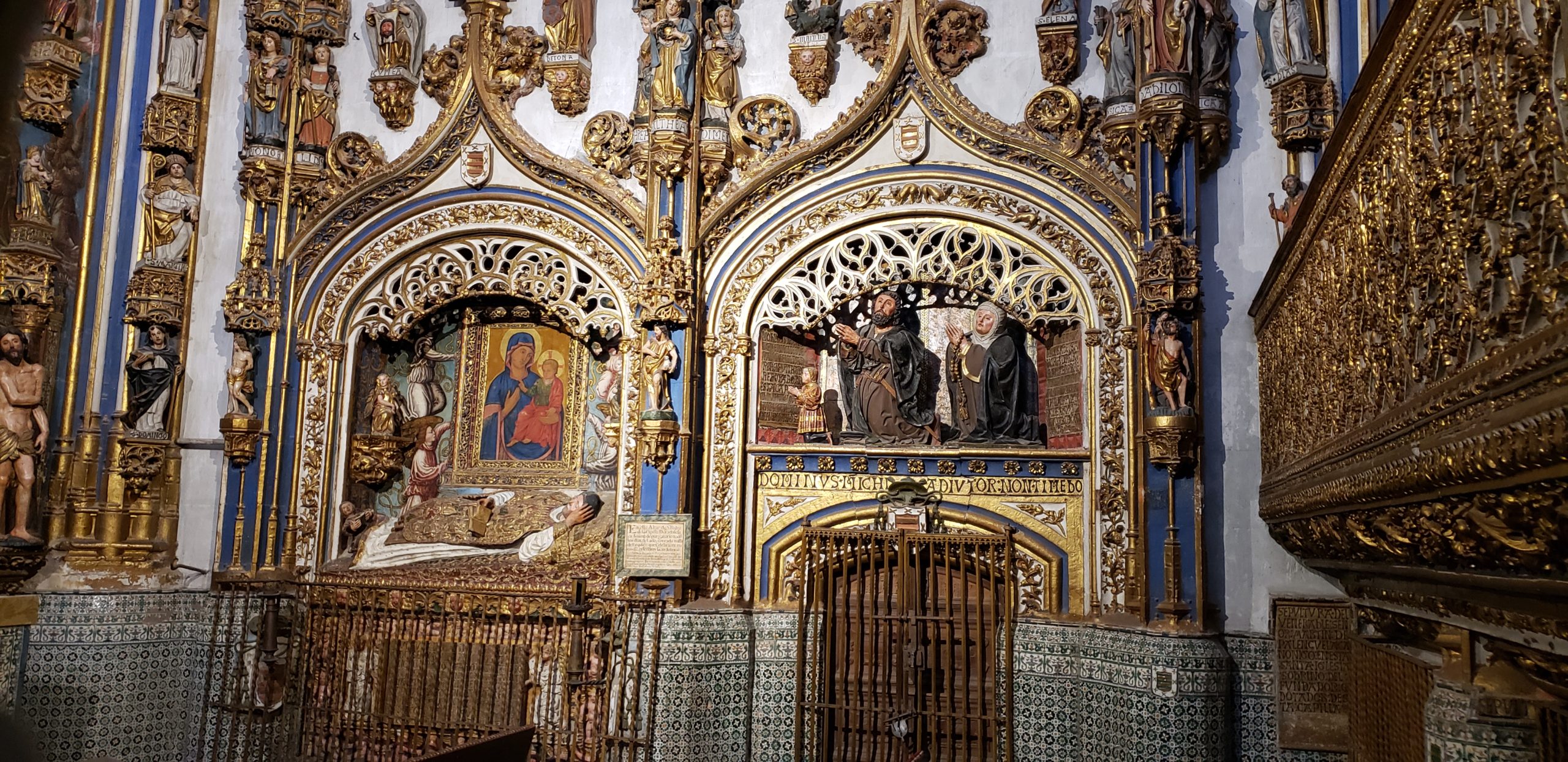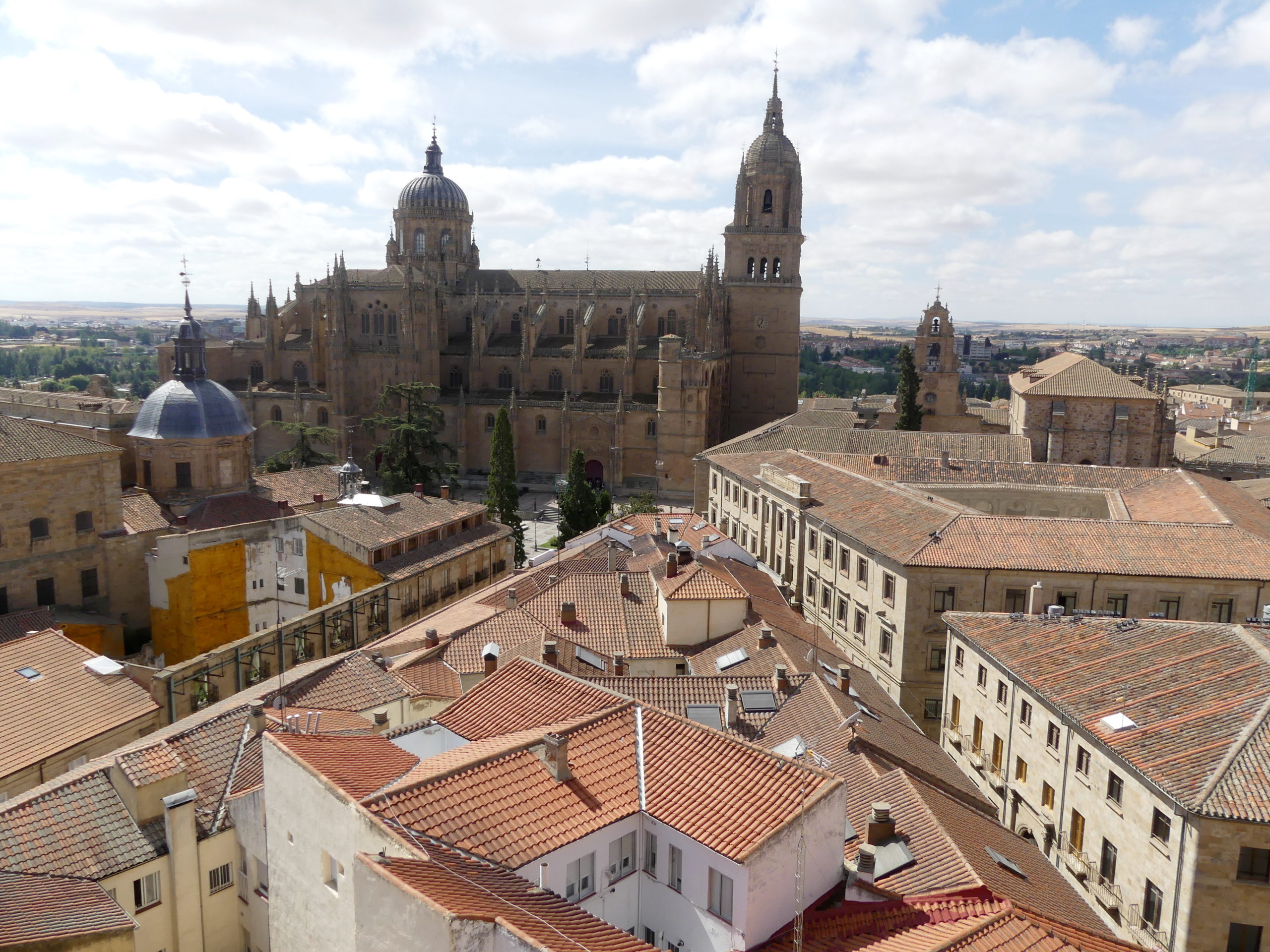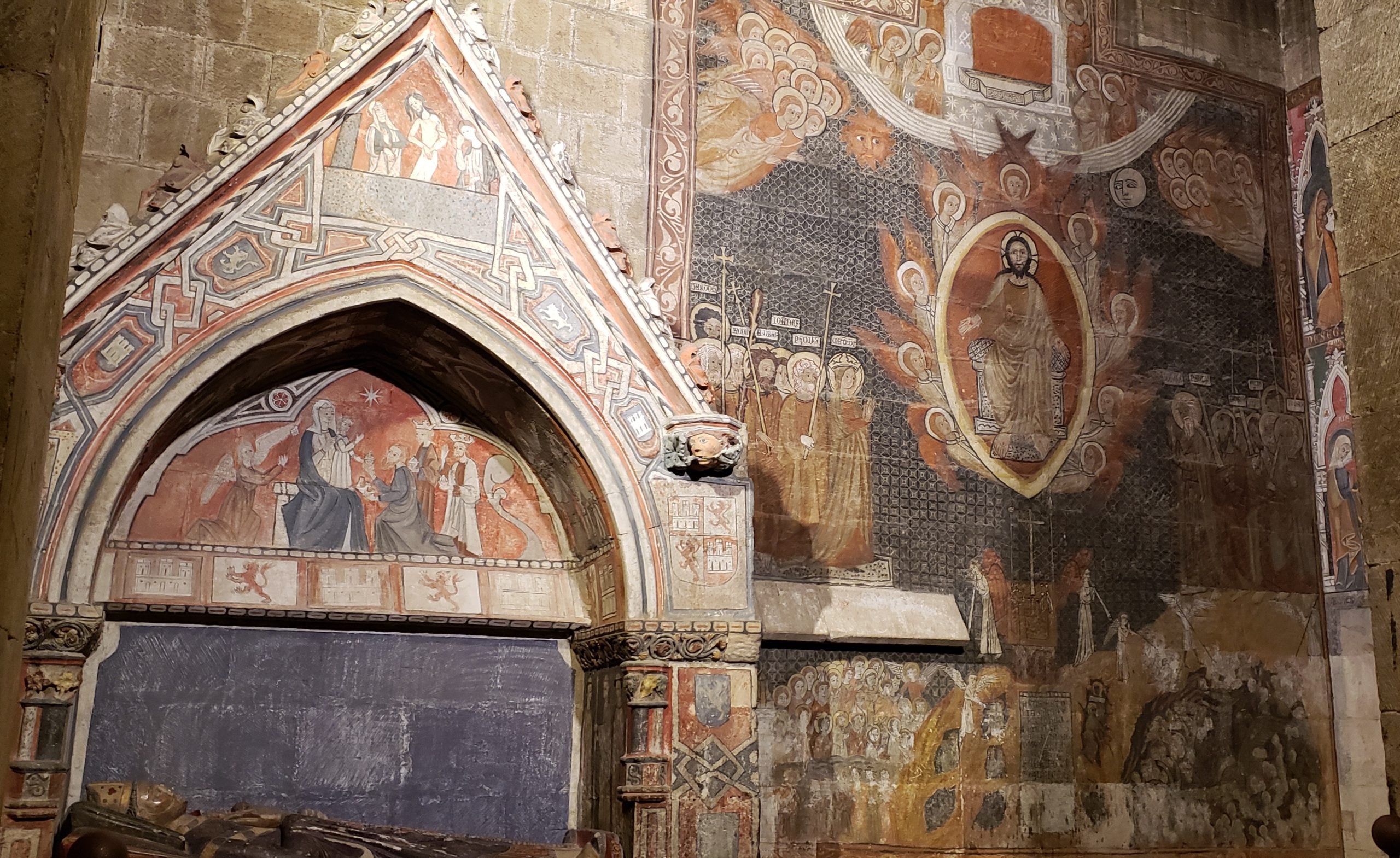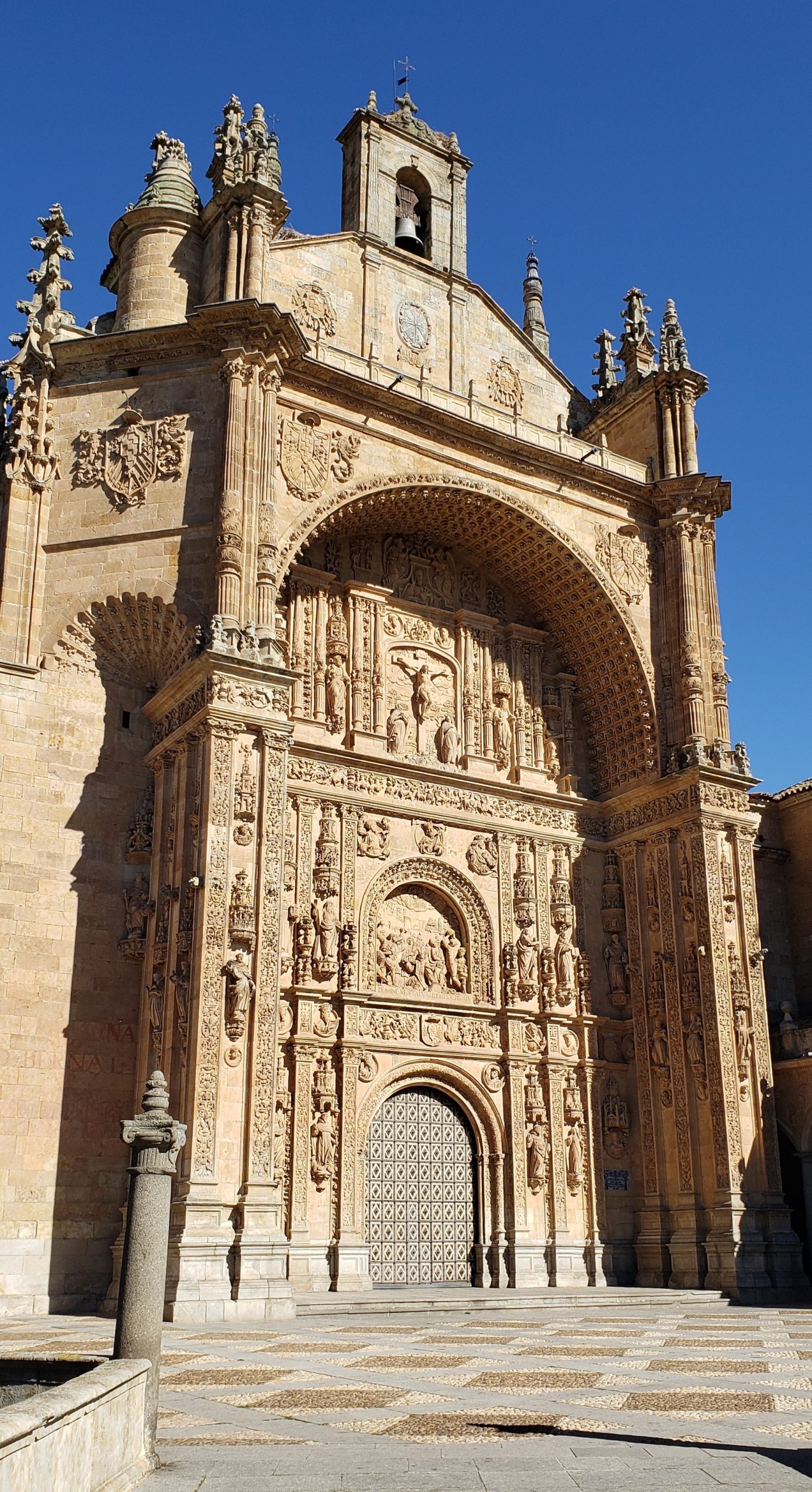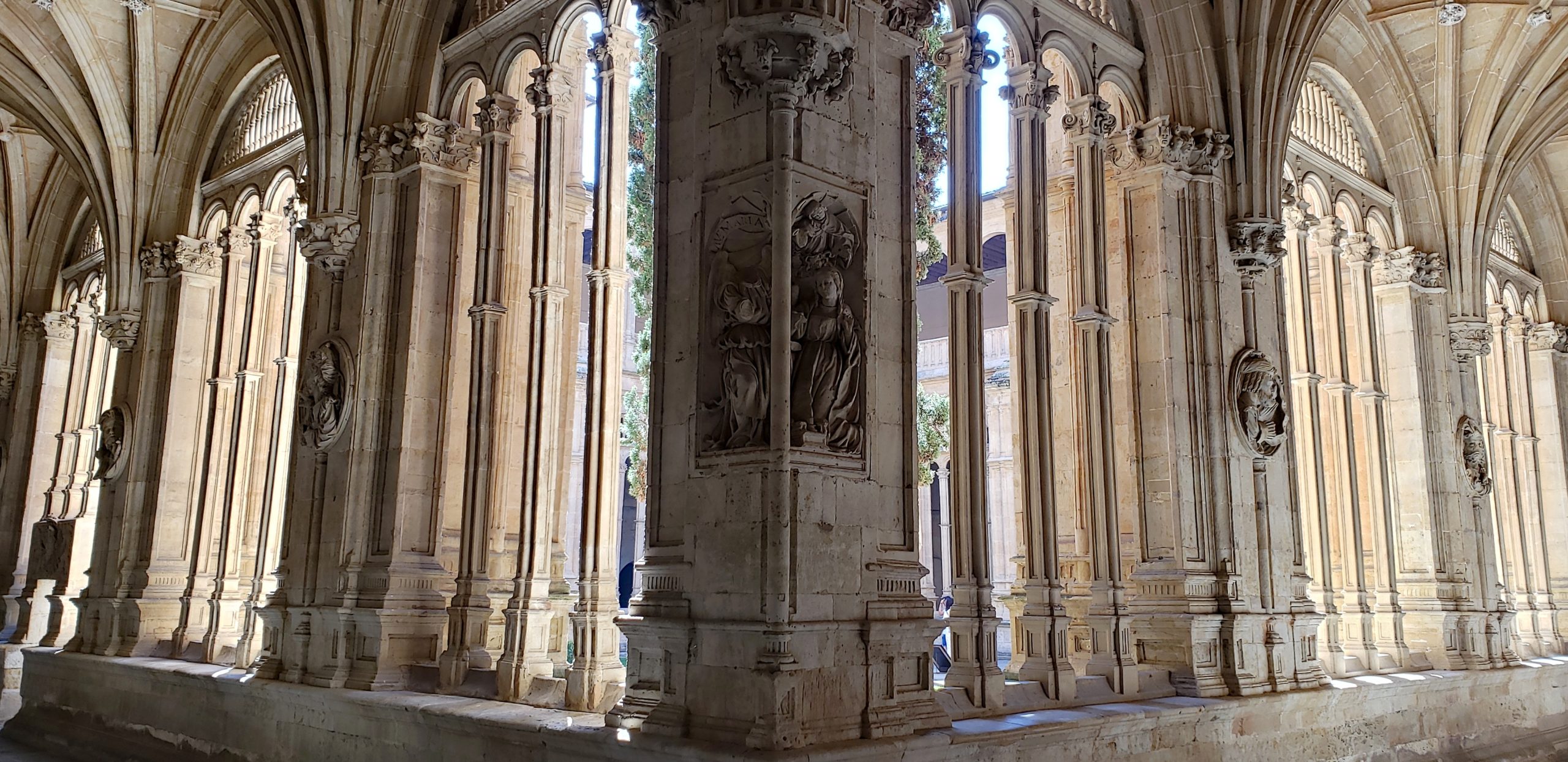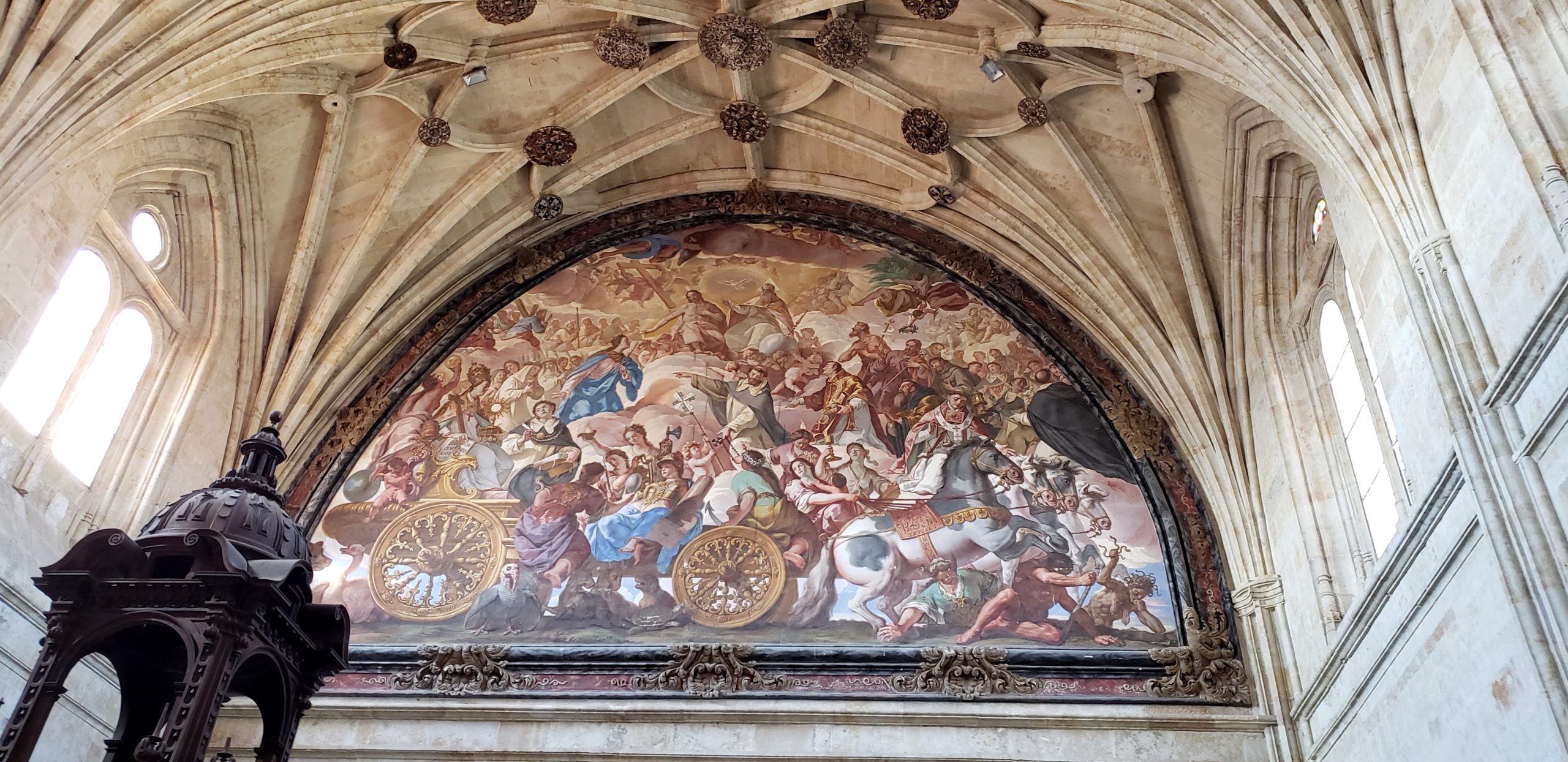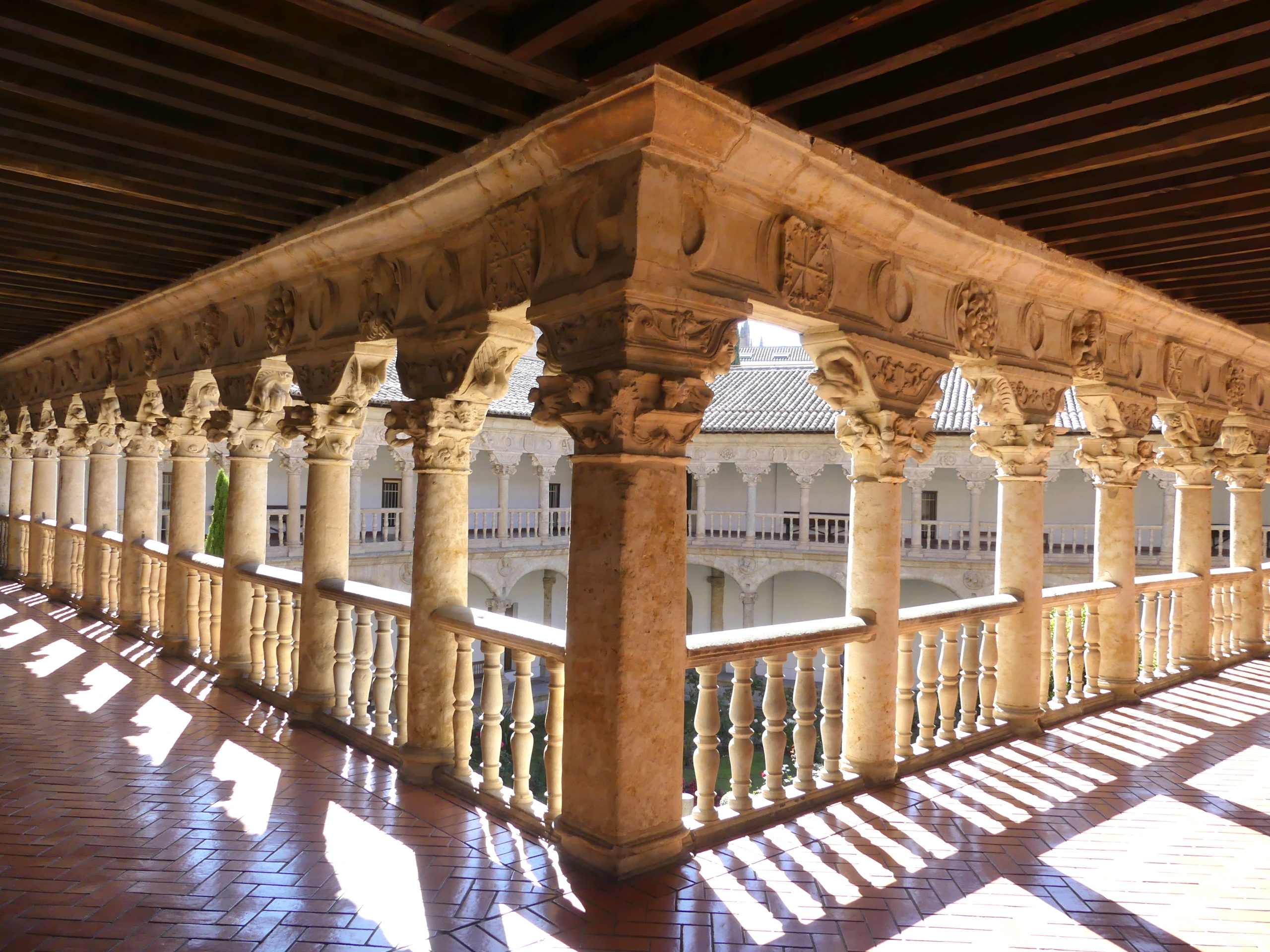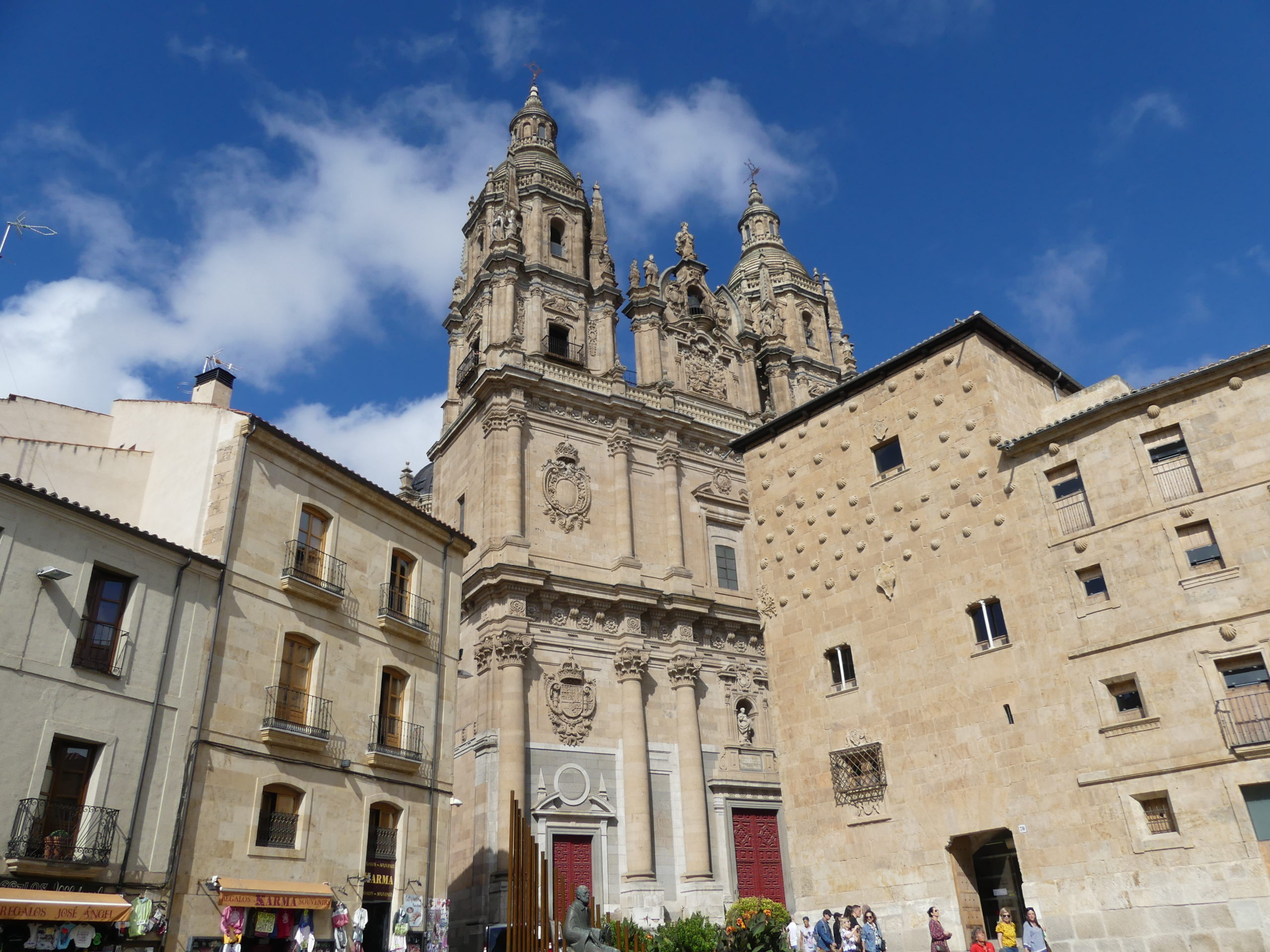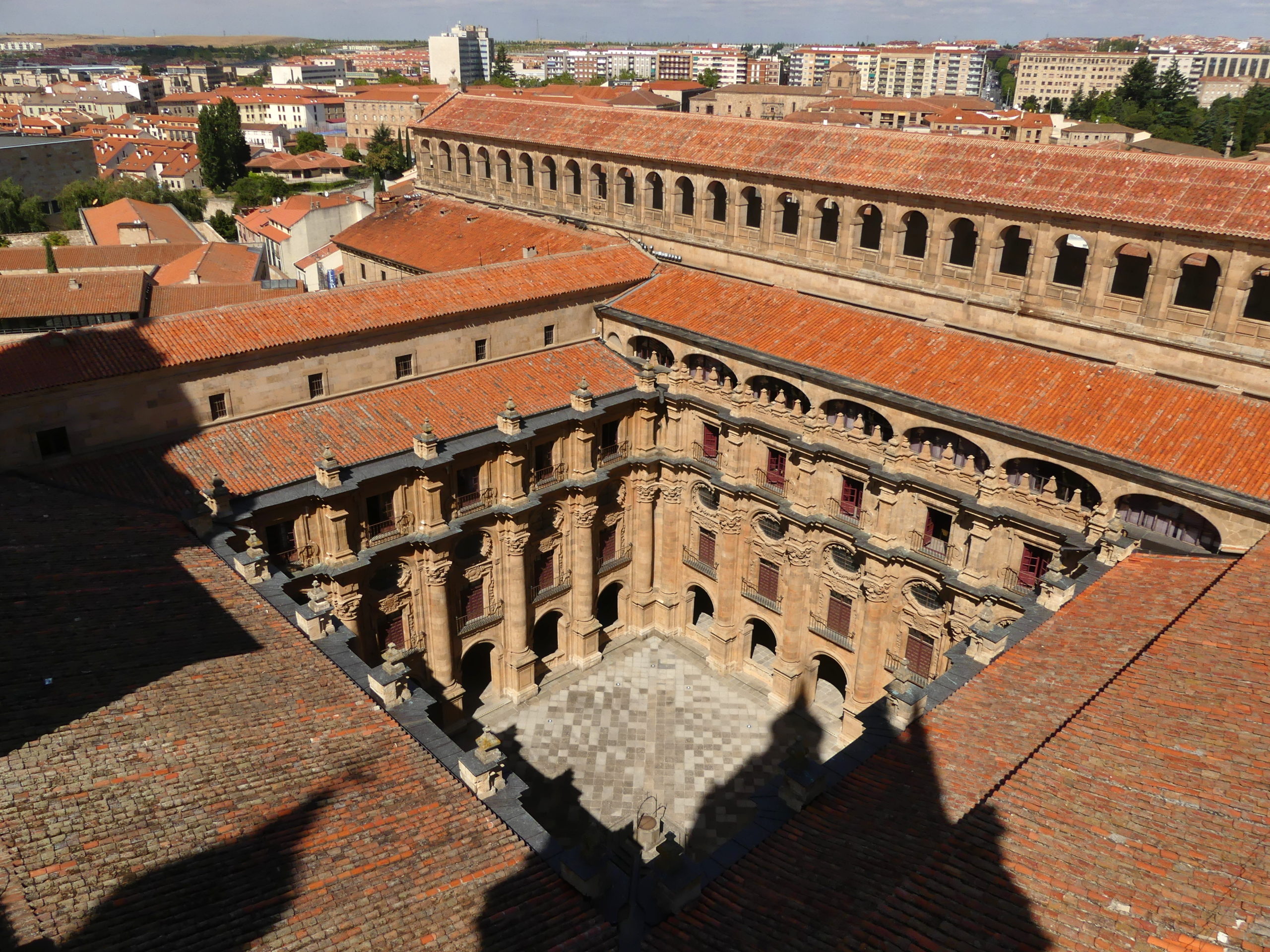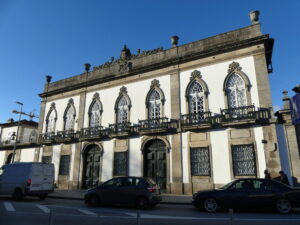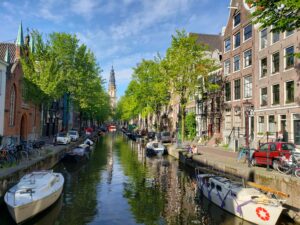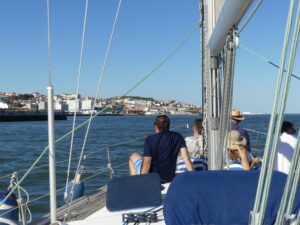In brief: The sacred and the secular have always lived side by side in Salamanca. This post honors the first, the grand churches and monastic centers.
Our other post wanders along the secular side (university, courtly, and commercial life). (Click here to read Secular Salamanca)
The Cathedrals
Salamanca’s notable religious institutions arose while the Spanish kingdom flourished. From the late middle ages Into the 17th century, Spain – with the grace, the Spanish felt, of God – climbed to the height of its power and wealth, superior on the seas and exploiting silver, gold and other products of the Americas. That money funded behemoth churches to honor God in grandeur and reveal a glimpse of the divine realm in stone and art.
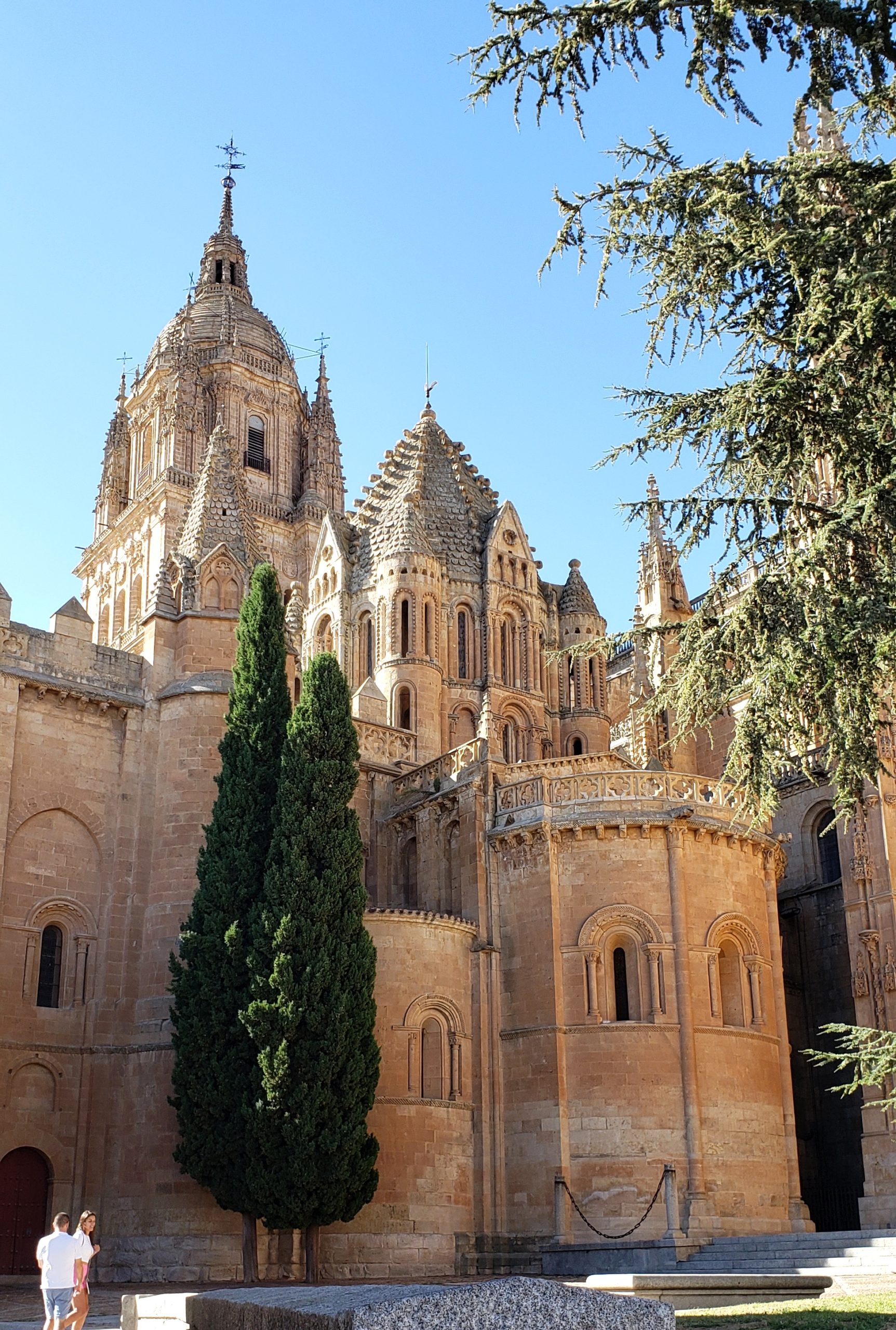
The most impressive in size and splendor are the two Cathedrals that dominate the historic town: the Old (built from the 12th to the 14th century) and the New (built from the 16th to the 18th) which supplanted the Old.
We were confused for a while during our tour of the New one because we suddenly found ourselves in the Old one, separated only by a simple staircase. This picture from a different perspective from ours atop La Clerecía shows what we didn’t quite understand at first, as the Old’s Romanesque tower nestles below the New’s Gothic tower. The two cathedrals are conjoined.
High atop the bell towers of La Clerecía, the centuries-old church of the Jesuit missionaries, we look across the rooftops of Salamanca toward the New Cathedral.
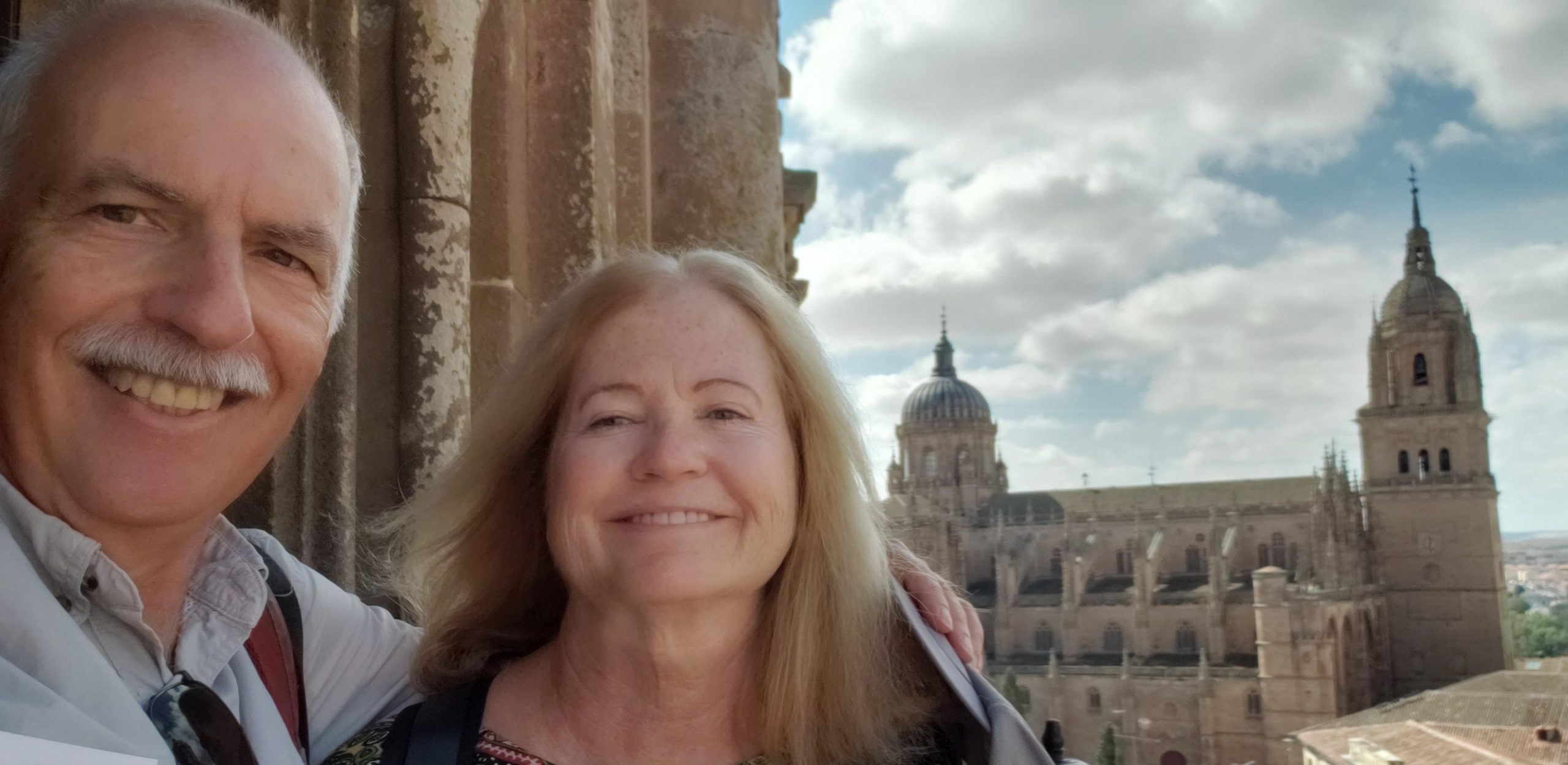
Below is the most elaborate of the portals into the New Cathedral, with a touch of the familiar Gothic style and a whole lot of Plateresque, a version of baroque. That style is supposedly the imitation of religious scenes and other decoration in stone – as above the central arch – akin to the elaborate detail of engraved silver. The Spanish for silver is ‘plata.’ The main panels present a nativity and adoration by the Magi.
A resplendent dome rises high above the center of the New Cathedral amid the stone tracery.
The giant pillars that support the vaulting roof of the New Cathedral culminate in this Gothic tracery overhead.
Another view up into the Gothic and late Baroque heavens of the New Cathedral. Yes, we did love looking up within the church.
The seating of the choir seems humbled by the towering pillars of the New Cathedral and their luminous backdrop.
The centuries-old carved wood benches of the choir look lustrous in this light. The choir is not in a loft but on the same level as the main altar, a typical feature of these grand Gothic churches.
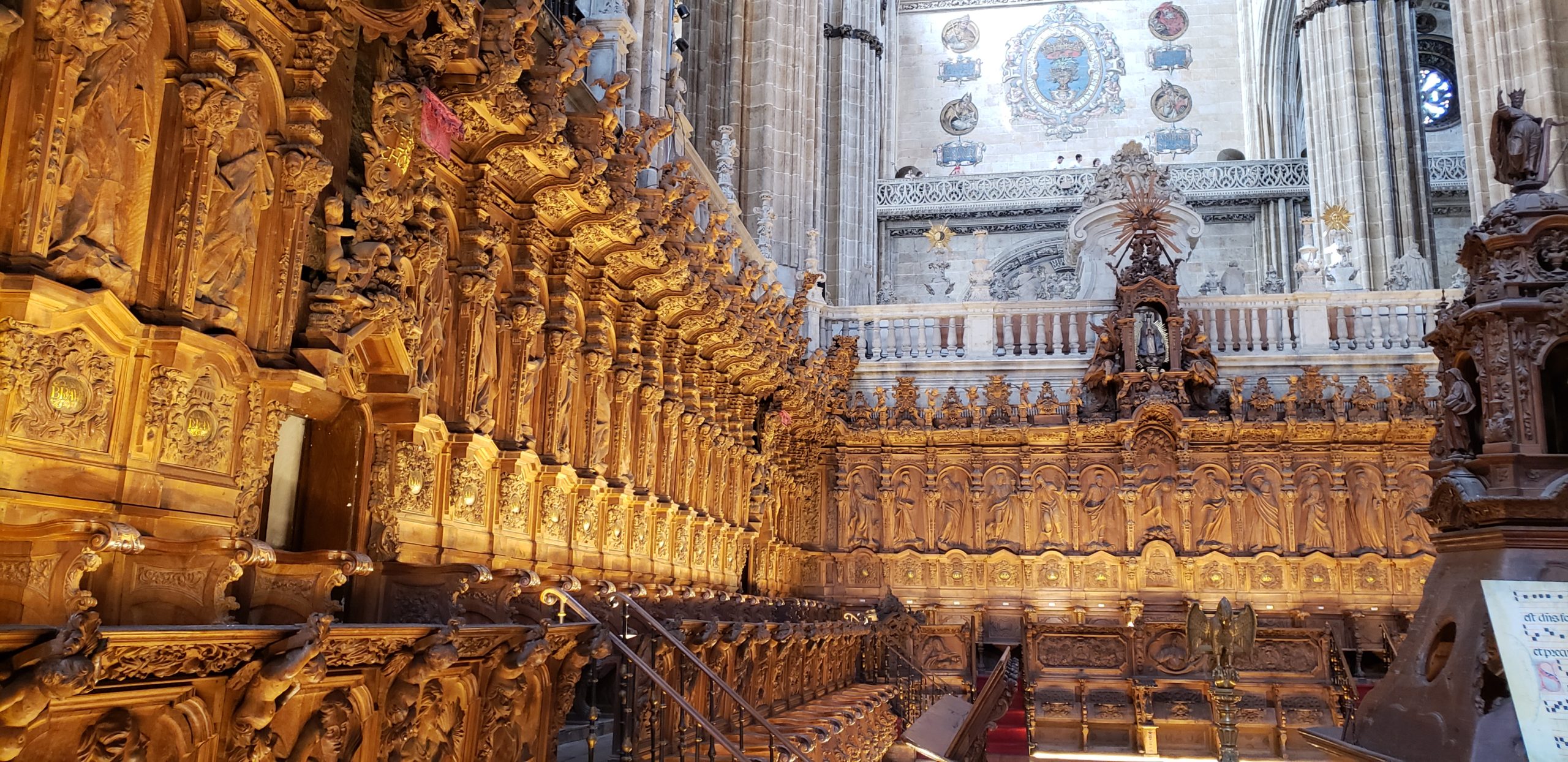
We were at first surprised that the seating for the church’s parishioners occupied less space than the choir’s. But we learned that this central section of the choir and the main altar, mostly walled from the rest of the church, served royalty and wealth, while the common folk stood outside these central spaces. So we were not surprised by the finery worn for a wedding that began in the center while we were visiting.
There’s no wondering why this space in the New Cathedral is called the Golden Chapel.
A view of the New Cathedral from La Clerecia belfry towers – without the visitors in the way. Now you can see the lovely rooftops of the other grand buildings in town.
After passing through an older cloister, we descended a simple staircase to find ourselves in the Old Cathedral…and its most important chapel, honoring Saint Martin. Be sure to know your left from your right. A medieval fresco at the far right of Saint Martin’s Chapel depicts the Last Judgment, the first chapel in the Old Cathedral after we transitioned from the New one. The naked, doomed to fall into the dark pit on the right, contrast strongly with the white-clothed good guys greeted by heraldic angels on the left, at Jesus’ right hand. The small painting over the crypt to the left of the photo shows Jesus and Mary hailed by the three Magi.
The central nave of the Old Cathedral ends at a richly painted and gilded altarpiece consisting of 53 exquisite little Renaissance scenes topped by a Last Judgment, much more turbulent than the staid one in St. Martin’s chapel. Here a second wedding was in progress, which seemed much less privileged than the one in the New Cathedral.
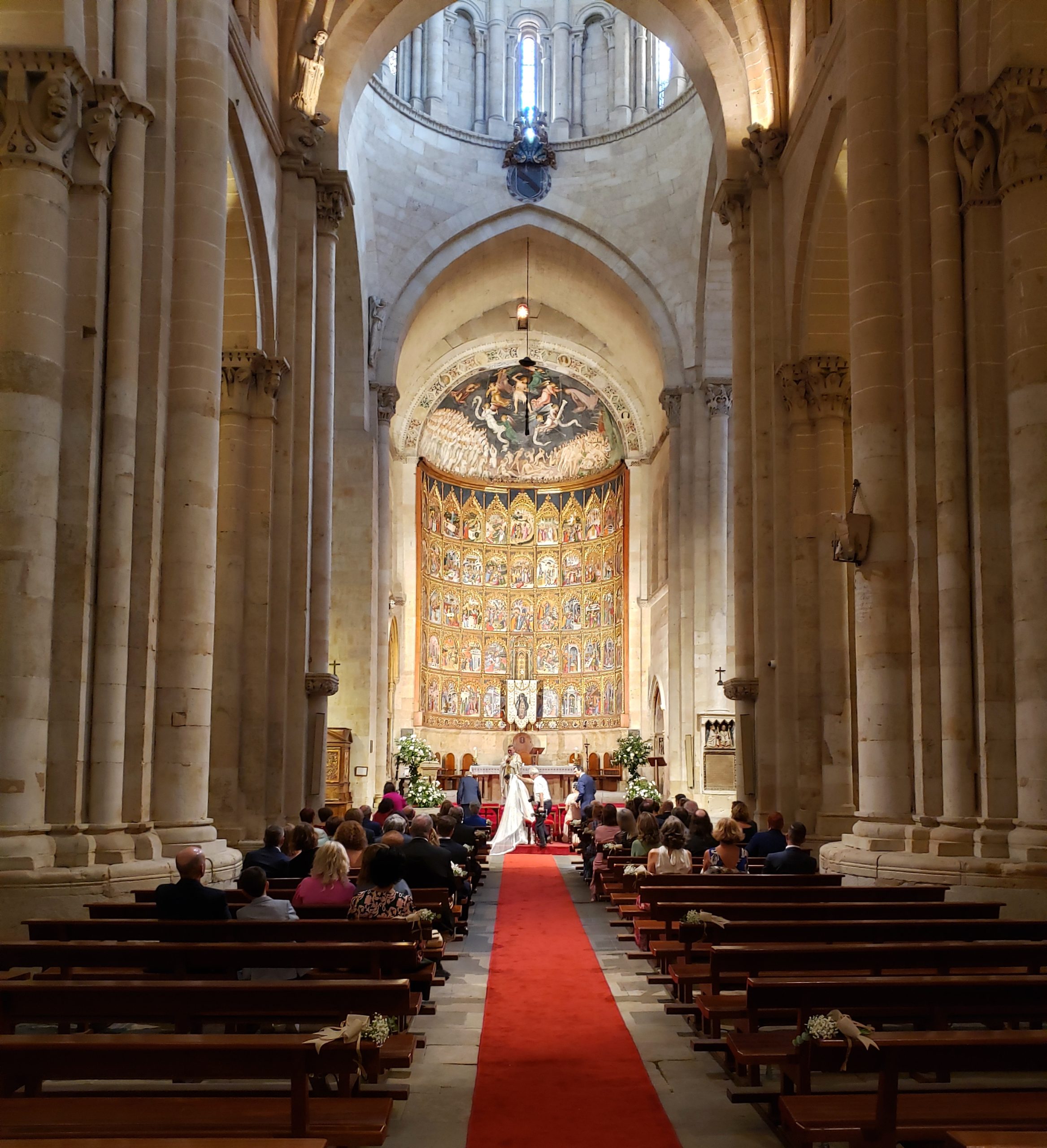
The Missions
Near the Cathedrals are sites that fostered two major monastic sects, the Dominicans and the Jesuits. Both prepared the missionaries to spread Catholicism outside Europe, certain that they were enlightening the natives through religion and education. Richly funded as the sects were, the massive stonework buildings of these institutions still loom over the city streets, works of art in themselves and filled with artworks.
The Dominicans
The elaborate main portal of the Church of San Esteban (or St. Stephen), the church associated with the Dominican monastery built in the 16th century. The style of the baroque façade is also Plateresque, flamboyantly decorated in fine detail. Many saints flank the central scene, the stoning of Stephen/Esteban, while rondels feature Old Testament figures such as Moses – and at ground level, not quite visible from this angle, rondels of Adam and Eve.
A gilded baroque altar, highlighted by six twisting columns, contrasts with the simpler style of the San Esteban church interior. The painting on top honors St. Stephen.
Below, the elegant cloister within San Esteban appears to have windows, but is open to the air between the slender columns. The aisles gracefully adorn the space, topped with equally light Gothic roofing. Key scenes are sculpted in the corners, like this one of the Annunciation, as Mary hears that she will have a special child.
In San Esteban’s huge choir loft, an elaborate allegorical painting from 1705 by Antonio Palomino represents the Militant and Triumphant Church. Among the colorful figures are women representing the Church and its authority as well as heralding virtues like prudence and justice. The horses and carriage meanwhile stomp out evils like ignorance and heresy on the right plus overcome the seven deadly sins (in the guise of animals) on the left. It’s a good thing we climbed the stone staircase that seemingly floated up from the lower level, but promised an ascent to higher values.
Nearby St Esteban is a Dominican cloister called Las Dueñas from about a century before the other. It combined mudejar style (Muslim influenced) with the Plateresque, as in the delightful topping of the columns (with their richly varied and often whimsical figures) at the cloister’s upper story.
The Jesuits
In another part of the old town, the Baroque façade of the Jesuit’s La Clericía church (the one we climbed) truly dominates the buildings in its vicinity. From the adjacent plaza, it looks pretty tall. From the narrow lane just in front of it, it o’erleaps the sky. No wonder that the climb up and up into the two towers is called the Scala Coeli – loosely, stairway to heaven. As our photo of us and the Cathedral shows, we ascended it. No other vantage point in Salamanca gives such a splendid a vista over the city.
That building in the foreground with the stonework in the form of shells (over 300 altogether) is a palace from a century of so before the church – and now a city library with a charming atrium that also looks up to the church towers. (For more about this, read Secular Salamanca)
At the height of the Scala Coeli, the top of the Clericía church, we peered into the grand three story cloister of the Jesuit monastery, as the baroque belfries where we stood cast their shadows on it. It’s difficult to gain access to the church and cloister, but this top down view was fulfilling.
Once again we were confused at this point because the Jesuits founded a colegio here, now called the Pontifical University of Salamanca – but NOT the famous University dating from the 1200s, about a half kilometer away. A friendly manager of an antiquarian bookstore clued us in to the difference.
(To enlarge any picture above, click on it. Also, for more pictures from Spain, CLICK HERE to view the slideshow at the end of the itinerary page.)


